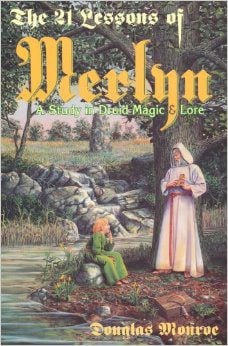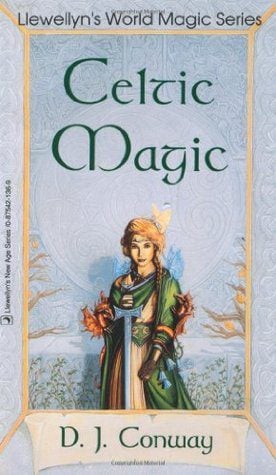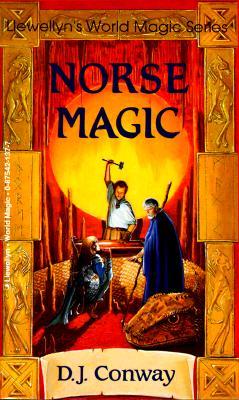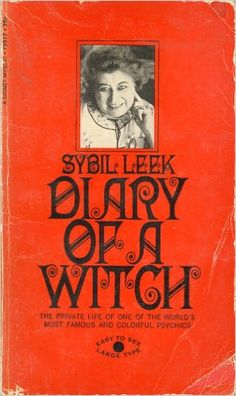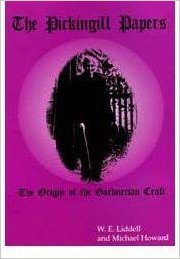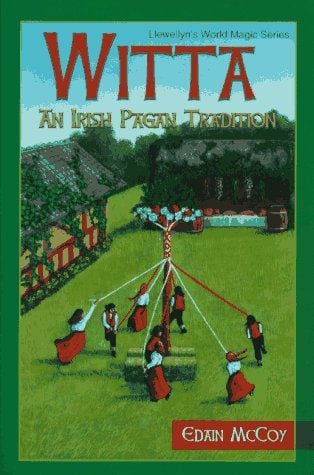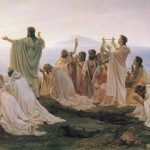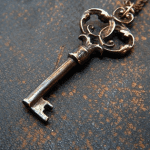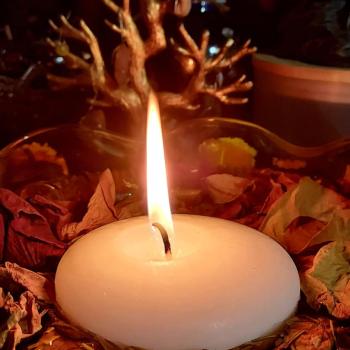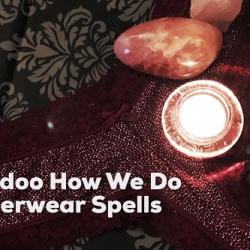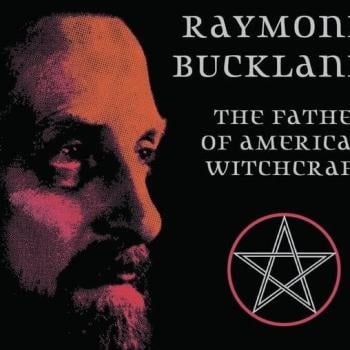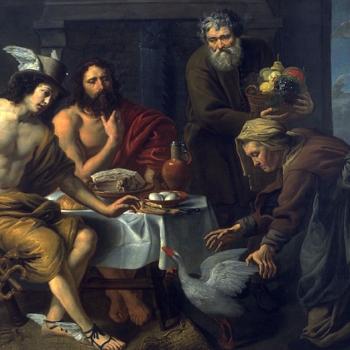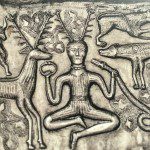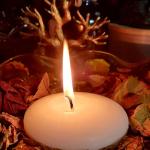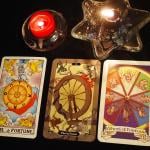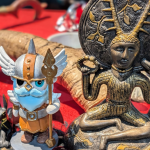Thousands of books on Wicca and Witchcraft of varying quality have been published over the last thirty years. Some of those titles have been great, and others less so. There’s no way to objectively determine “the worst” Witch book of all time, and there will be many readers out there who will disagree with my choices. It’s possible that a few books on this list are among “the favorites” of some Witches. What we like can be very subjective and this list can only represent the books that I personally found disagreeable.
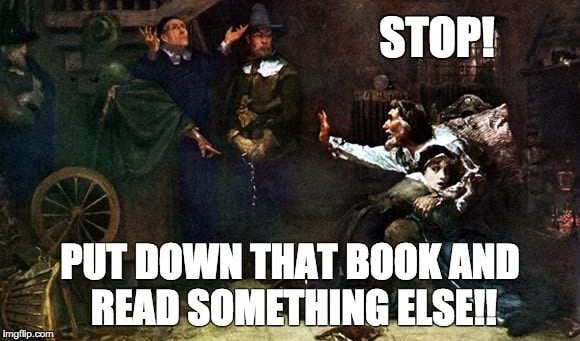
Right now I think we live in a new golden age of Pagan publishing. There are so many different titles available, and on so many different aspects of Witchcraft and Paganism that it’s often enough to make one’s head spin. The sheer abundance of quality titles on practice, history, sabbats, and ritual is a truly amazing thing to be a part of. Do we still get a few stinkers? Of course, but I think the good far outweighs the rotten these days.
But I just can’t help but think of the bad books now and again. Here’s my list, I hope it’s fun.
Bonus Book: The 21 Lessons of Merlyn by Douglas Monroe
Had Monroe marketed and presented his book as the fictional enterprise it is, it wouldn’t have made this list. I’m sure that lots of people have gotten things out of Monroe’s Merlyn, sadly real history is not one of those.
The 21 Lessons of Merlyn is allegedly based on a manuscript called The Book of Pheryllt, a document that simply doesn’t exist. In addition most of Monroe’s “Celtic” spells and ideas have nothing to do with the ancient Celts. There’s nothing wrong with using mythological figures to illustrate new spiritual ideas, but to cloak those new ideas in pseudo-history is pretty disgraceful.
No. 5: Celtic Magic by DJ Conway
Despite it’s awfulness, there will always be a soft spot in my heart for DJ Conway’s Celtic Magic. It was my first Witch-book as an adult, and I’m here today because of it. I found so much of it captivating as a young person, but time has not been kind to this piece of fluff from 1990.
Celtic Magic does contain the names of some real Celtic deities, but the book only nominally deals with actual Celtic culture and beliefs. It’s really just a Wicca 101 book with a few nods to Celtic deities thrown in for fun. Some of her deity information is accurate, and some of it is simply wishful thinking. I wish Cernunnos had been worshipped everywhere in the Celtic world, but his name only appears once in the historical record and most of his iconography is limited to Gaul.
And oh the history in this book! Conway has some lovely information about Druids in Celtic Magic, it’s just not accurate information. The Wicca 101 tone of the book means that Conway’s Celts celebrated holidays like the Spring Equinox, which we know they did not.
Despite this book’s general awfulness I still love it. Maybe it’s because I always wanted to date the young lady on the cover.
No. 4: Norse Magic by DJ Conway
Before anyone thinks this article is just an excuse to pick on DJ Conway, let me just say that DJ Conway is an excellent writer. She really is. Her prose is easily understood and completely absorbing. There’s a reason I fell in love with Celtic Magic all those years ago (and not knowing any better helped a lot too!), and once had a bookshelf with about half a dozen Conway volumes on it.
My biggest problem with Norse Magic is the sheer laziness of it all. It’s basically Celtic Magic, but with Norse names inserted for the Celtic ones. Like it’s sister-book, it’s also a Wicca 101 primer masquerading as something else. I wish the Vikings had all been Wiccans and celebrated Imbolc but they weren’t and they didn’t.
Unlike Celtic Magic this book never warmed the cockles of my heart. Perhaps it’s the less attractive cover, or maybe, and most likely, it’s because I had grown up a little bit as a Witch by the time I picked this one up.
No. 3: Diary of a Witch by Sybil Leek
I feel a little bad putting this book on the list because I like Sybil Leek. I’d never argue that her books are classics, but I always got the feeling that she’d be great to have over for a cup of tea. In addition her contributions to the Craft are nearly unmatched. While time hasn’t been quite as kind to her legacy as it has been to her peers* (Sanders, Gardner, Valiente) she still left a big shadow when she passed on. After moving from England to the United States in the 1960’s she became one of the most famous Witches of her era and worked tirelessly to promote the Craft.
So with all this praise directed at her, what’s wrong with her memoir? Just about everything.
In Diary of a Witch Leek goes straight from one impossible to scenario to another, never sharing any real names with her readers or any confirmation that her fantastical stories might be true. She becomes a Witch queen in France, marries a famous pianist (who is never named of course), lives with gypsies, and spent many delightful moments of her childhood with an extremely loving, gentle, and kind Aleister Crowley.
My favorite passage in the entire book might be when Crowley proclaims young Sybil Leek the future of Witchcraft:
“One day Crowley cupped my face in his hands and spoke to my grandmother.
‘This is the one who will take up where I leave off,’ he said, for once gentle and serious at the time. ‘You’d better remember that, young lady. You’ll hear all sorts of things said about me and they’ll say the same things about you, but I shall have broken the ground for you.'” –Diary of a Witch, page 31.
A few paragraphs later Leek writes of how Crowley “never broke faith with the Old Religion,” which is a huge problem since Crowley was never a Witch!
Leek was an impressive woman, and didn’t need to concoct a fanciful history to drive that point home.
No. 2: The Pickingill Papers by W. E. Liddell and Michael Howard
By all accounts W.E. Liddell is a kind and gracious man. Every writer I’ve ever read who has interacted with him has had nothing but nice things to say about him. Michael Howard was one of the most hard working Witches who ever walked the face of this Earth and he also contributed greatly to the Craft. Just because I think a book is bad doesn’t mean I think its authors are necessarily so.
The Pickingill Papers presents a remarkable retelling of the origins of Modern Witchcraft. And instead of Gerald Gardner and Margaret Murray occupying the central narrative, an alleged English cunning-man named George Pickingill is presented as the architect of Modern Witchcraft. In this alternate history Pickingill was part of a hereditary Witchcraft tradition and then later went on to launch nine covens that changed Witchcraft forever. Both Aleister Crowley and Gerald Gardner have been linked to Pickingill in this version of Craft history.
The material that makes up the Pickingill Papers was first published in Michael Howard’s The Cauldron magazine beginning in 1974. According to W. E. Liddell, who submitted the material to Howard, it was written by various Witches in the Pickingill Tradition and not necessarily by Liddell himself. Liddell submitted numerous articles to Howard, and the collected result is the book The Pickingill Papers.
Fantastic origin stories are nothing new in the Craft, but I’ve always been surprised by just how powerful and seductive the Pickingill myth is. I often get asked about Pickingill when lecturing on Wiccan history, and those who ask generally don’t like my response, because there’s absolutely nothing connecting Pickingill to Witchcraft, and very little even connecting him to cunning-craft.
Fifty some odd years after his death Pickingill was reborn as powerful “witch” by English writer Eric Maple who featured Old George in his 1962 book The Dark World of the Witches. In Dark World Pickingill is cast as one of the last great English witches and his reputation only grew from there. The articles submitted by Liddell in Papers reasserts this idea and turns Pickingill into something of an international Witchcraft celebrity, all without any sort of paper trail or credible eye witnesses.
No scholar has found any real evidence for Pickingill or his nine covens, and the real George was most likely an unremarkable man who died in anonymity. The Pickingill Papers are a lot like having a friend say they have a unicorn in their backyard that they won’t show to you. Eventually you’ve got to find a way to prove your story, or it’s just that, a story. We already have enough problems honestly accounting for our history, we don’t need another red herring making everything even worse.
No. 1: Witta: An Irish Pagan Tradition by Edain McCoy
I can’t imagine any other book occupying this space. Witta is an absolute travesty on several levels, and has probably become one of those few books in Modern Witchcraft that’s so bad everybody knows about it. If you’ve never stumbled upon Witta before, thank whatever deities you pray to for their benevolence.
Wiccans, Witches, and Wittans? Yup, accoring to McCoy’s book “Witta” is the ancient Irish-Pagan version of Wicca, and lasted into the modern era. Never mind no one before or since this book’s publication has ever described themselves as a Wittan.
IF Witta was simply trying to describe a new form of Wiccan-Witchcraft inspired by Ireland it would be fine. Sadly, it takes its own awful history seriously and chooses to share an Ireland that never was. There was just something about the early 90’s and bad Celtic-inspired stuff. On the plus-side, copies online start at just a penny!
*With all of her books currently out of print and very few Leekian Witches around (though I do know some folks with links back to her original coven) she hasn’t had the lasting impact of many other Witches who caught the public-eye back in the 1960’s.


